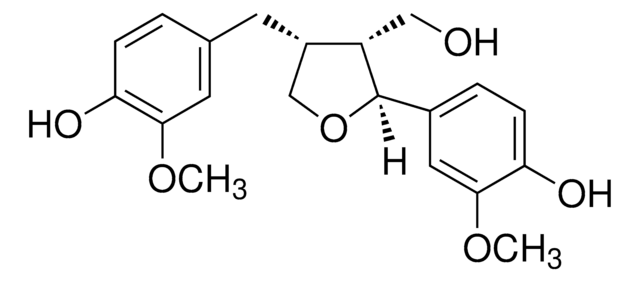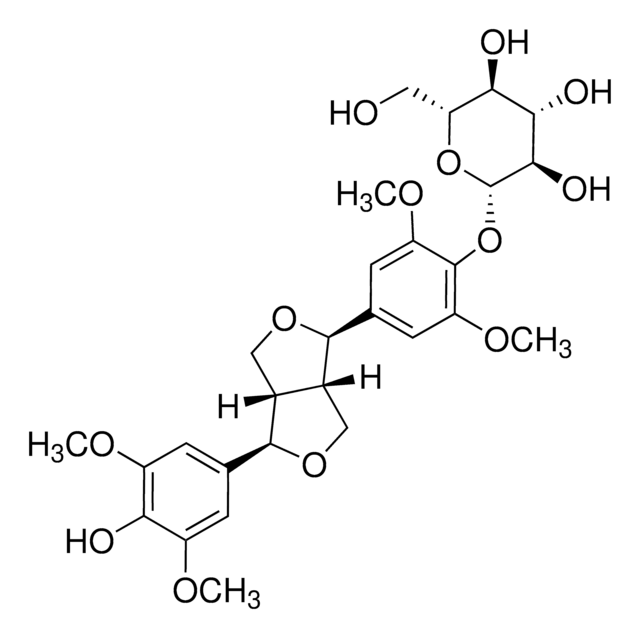SMB00436
Pinoresinol diglucoside
≥98% (HPLC)
Synonim(y):
(+)-Pinoresinol 4,4′-O-bisglucopyranoside, Pinoresinol di-β-D-glucoside
About This Item
Polecane produkty
Poziom jakości
Próba
≥98% (HPLC)
Postać
powder
Zastosowanie
metabolomics
vitamins, nutraceuticals, and natural products
temp. przechowywania
−20°C
ciąg SMILES
O[C@H]1[C@H](O)[C@@H](CO)O[C@@H](OC2=CC=C([C@H]3OC[C@@]4([H])[C@]3([H])CO[C@@H]4C5=CC=C(O[C@@H]6O[C@H](CO)[C@@H](O)[C@H](O)[C@H]6O)C(OC)=C5)C=C2OC)[C@@H]1O
InChI
1S/C32H42O16/c1-41-19-7-13(3-5-17(19)45-31-27(39)25(37)23(35)21(9-33)47-31)29-15-11-44-30(16(15)12-43-29)14-4-6-18(20(8-14)42-2)46-32-28(40)26(38)24(36)22(10-34)48-32/h3-8,15-16,21-40H,9-12H2,1-2H3/t15-,16-,21+,22+,23+,24+,25-,26-,27+,28+,29+,30+,31+,32+/m0/s1
Klucz InChI
ZJSJQWDXAYNLNS-FUPWJLLWSA-N
Szukasz podobnych produktów? Odwiedź Przewodnik dotyczący porównywania produktów
Powiązane kategorie
Opis ogólny
Działania biochem./fizjol.
Kod klasy składowania
11 - Combustible Solids
Klasa zagrożenia wodnego (WGK)
WGK 3
Temperatura zapłonu (°F)
Not applicable
Temperatura zapłonu (°C)
Not applicable
Certyfikaty analizy (CoA)
Poszukaj Certyfikaty analizy (CoA), wpisując numer partii/serii produktów. Numery serii i partii można znaleźć na etykiecie produktu po słowach „seria” lub „partia”.
Masz już ten produkt?
Dokumenty związane z niedawno zakupionymi produktami zostały zamieszczone w Bibliotece dokumentów.
Nasz zespół naukowców ma doświadczenie we wszystkich obszarach badań, w tym w naukach przyrodniczych, materiałoznawstwie, syntezie chemicznej, chromatografii, analityce i wielu innych dziedzinach.
Skontaktuj się z zespołem ds. pomocy technicznej







